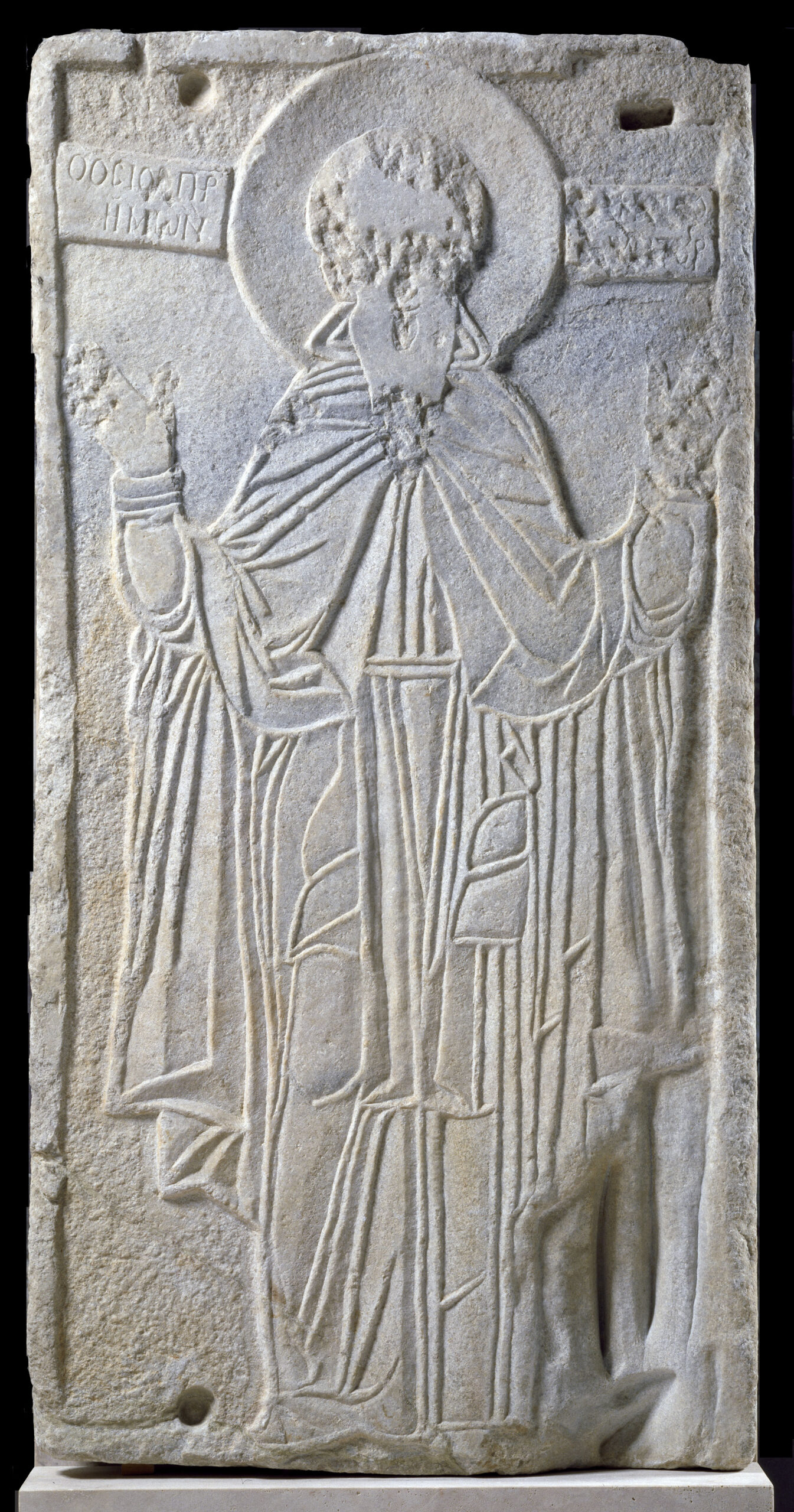
Marble icon of Hosios David
Within a frame the saint is depicted standing, frontal, with halo and his hands raised praying. To the left and right of the halo there are two squares with the inscription “Ο ΟΣΙΟΣ Π(ΑΤ)ΗΡ ΗΜΩΝ ΔΑΒΗΔ Ο ΘΑΥΜΑΤΟΥΡΓ(ΟΣ)” (Our holy father, David, the miracle worker). The saint is represented strict and weak. The facial features are damaged, however, we can discern a frail person with wide forehead, short hair and a beard. He is dressed in the attire of a monk: long robe, cloak and distinctive hood worn by the monks of the East, thrown across his shoulders. The background of the marble slab is rough as it was covered by mastic wax, a mixture of wax, marble dust and color, a technique particularly popular in the last period of Byzantium.
Hosios David was born around 450 AD in Mesopotamia and then moved to Thessaloniki where he lived for three years on a almond tree as “stylite”, an ascetic method aiming to the spiritual purification. Then he moved to a monastery in the city until his death, around 550 AD, and he was buried there. The icon was probably placed in this monastery of Thessaloniki which was probably destroyed in the 10th century.
Code
AG 773
Type
Marble icon
Chronology
13th -14th c.
Dimensions
Height 165 cm., width 83 cm., thickness 8 cm.
Material of Construction
Marble
Origin
Thessaloniki, cemetery



